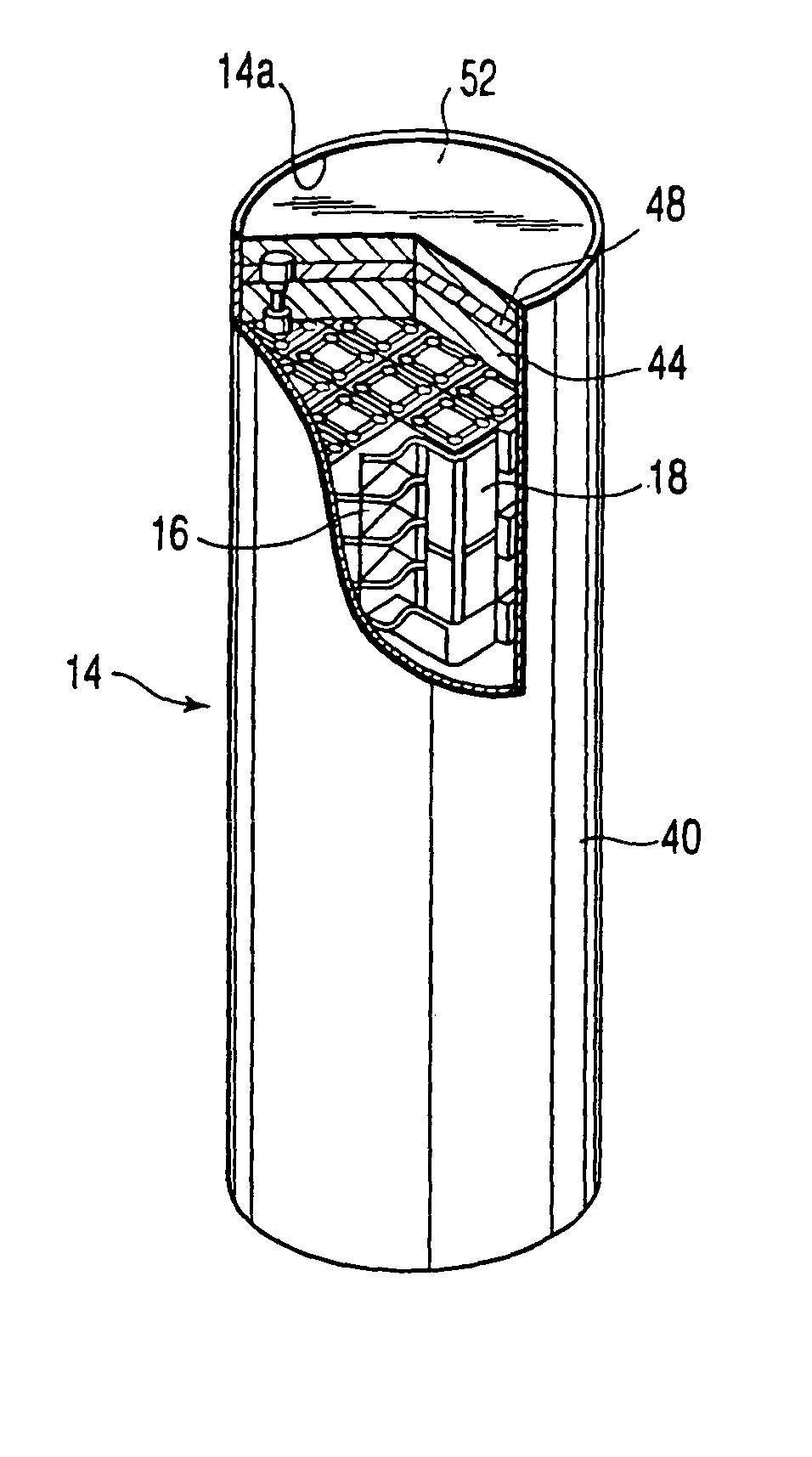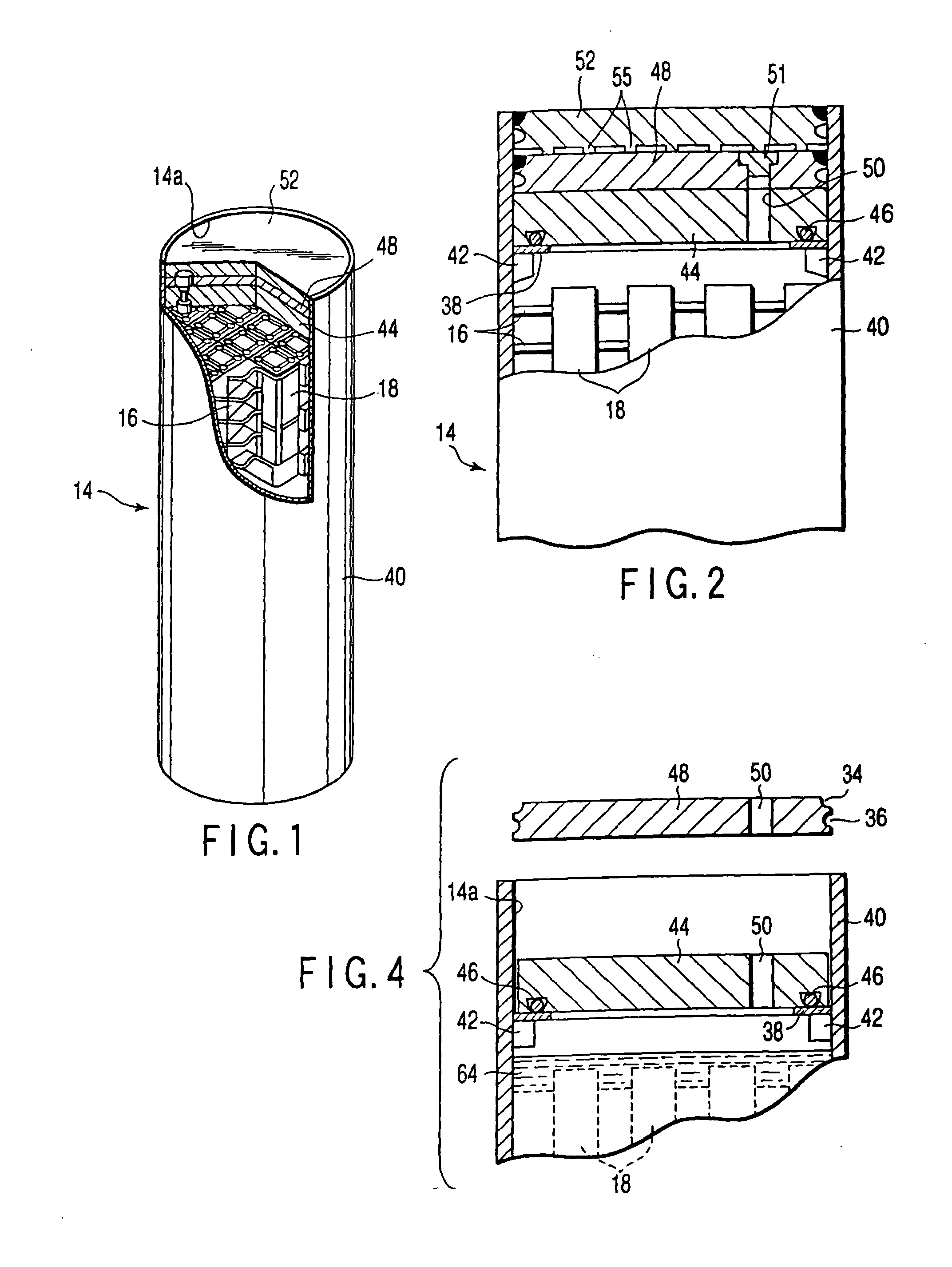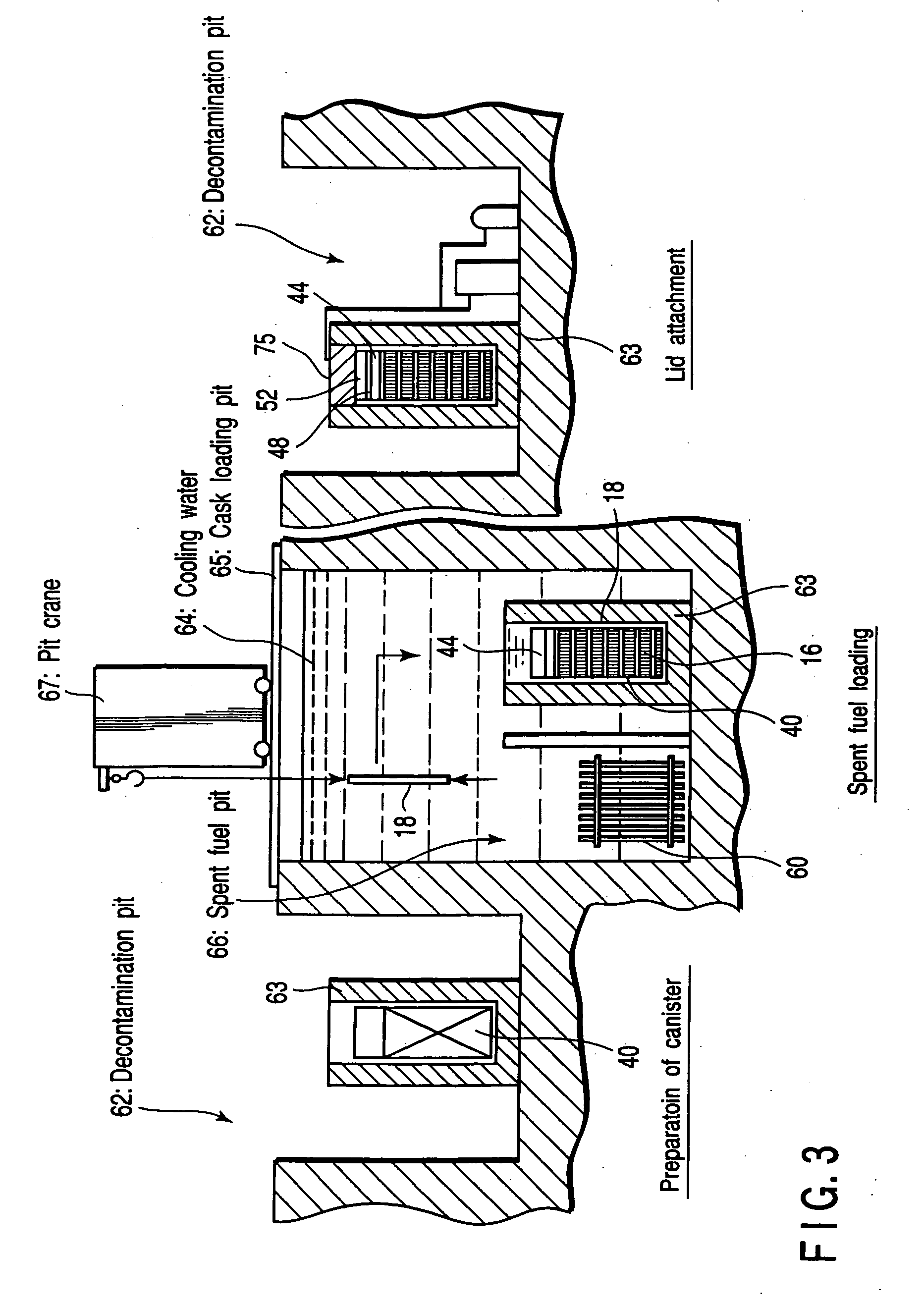Closed vessel for radioactive substance, seal-welding method for closed vessel, and exhaust system used for seal-welding method
- Summary
- Abstract
- Description
- Claims
- Application Information
AI Technical Summary
Benefits of technology
Problems solved by technology
Method used
Image
Examples
first embodiment
[0037] A canister according to the present invention will now be described in detail with reference to the accompanying drawings.
[0038] As shown in FIGS. 1 and 2, a canister 14 for use as a metallic closed vessel comprises a substantially cylindrical vessel body 40 that is closed at the bottom and has a top opening 14a. The vessel body 40 is formed of a metal such as stainless steel. A plurality of spent fuel assemblies 18 are sealed in the vessel body 40 in a manner such that they are supported by a basket 16. These spent fuel assemblies 18 are formed of a spent fuel from a reactor, for example, and contain a radioactive substance that involves heat release attributable to decay heat and generation of radiation. The canister 14 has a weld-sealed structure to prevent the contained radioactive substance leaking out.
[0039] More specifically, a plurality of support blocks 42, e.g., four in number, are fixed on the inner peripheral surface of the upper end portion of the vessel body 40...
second embodiment
[0073] Also in the second embodiment, therefore, steam can be prevented from flowing into the welding portion as the primary lid 48 is welded, so that the primary lid 48 can be securely welded without involving any weld defects that are attributable to steam. Thus, the resulting canister enjoys improved radiation shielding properties.
[0074] Also in the second embodiment, moreover, only one of the operations for discharging steam by means of the exhaust system 5 and intercepting steam by means of the shield gas may be carried out with the same effect. In this case, steam can be prevented from reaching the welding portion, and therefore, generation of weld defects can be prevented. Thus, the resulting canister provides high shielding properties.
[0075] Additional advantages and modifications will readily occur to those skilled in the art. Therefore, the invention in its broader aspects is not limited to the specific details and representative embodiments shown and described herein. Ac...
PUM
 Login to View More
Login to View More Abstract
Description
Claims
Application Information
 Login to View More
Login to View More - R&D
- Intellectual Property
- Life Sciences
- Materials
- Tech Scout
- Unparalleled Data Quality
- Higher Quality Content
- 60% Fewer Hallucinations
Browse by: Latest US Patents, China's latest patents, Technical Efficacy Thesaurus, Application Domain, Technology Topic, Popular Technical Reports.
© 2025 PatSnap. All rights reserved.Legal|Privacy policy|Modern Slavery Act Transparency Statement|Sitemap|About US| Contact US: help@patsnap.com



